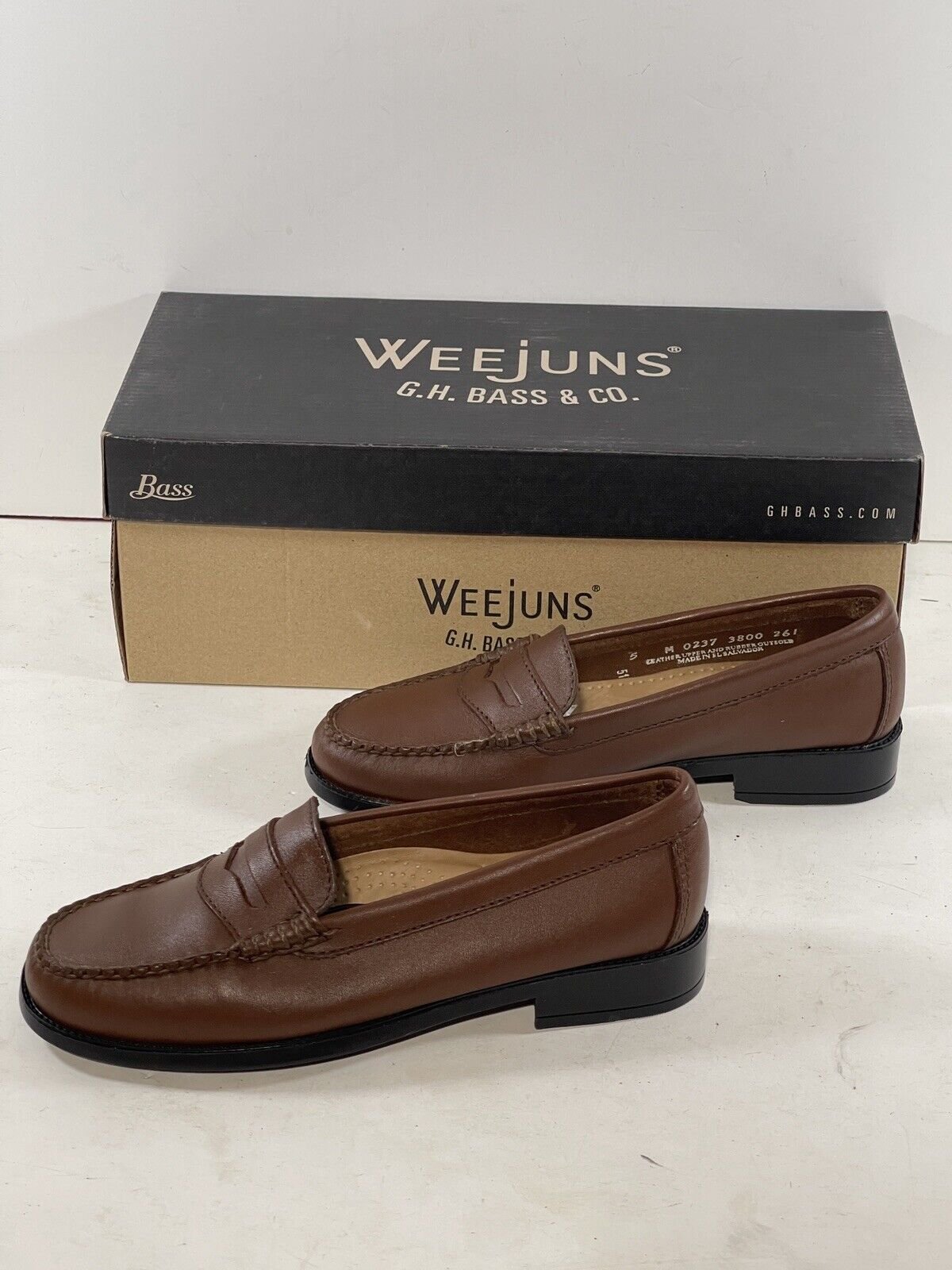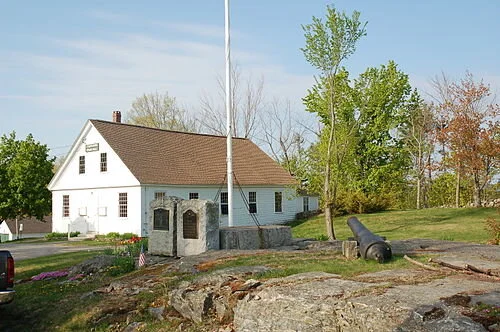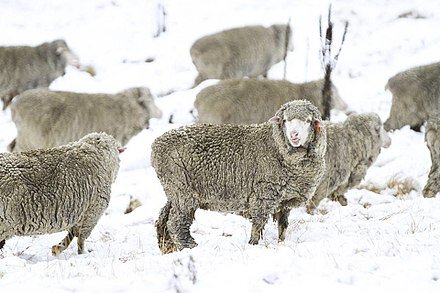
A history of loafers (shoes)
Note that these were made in El Salvador!
The G. H. Bass & Co. shoe factory, in Wilton, Maine; from a 1914 postcard. Built on Wilton Stream in 1904 and known as No. 1, the factory closed in 1998. The factory made the famous Bass Weejun loafers.
Excerpted from a New England Historical Society article
“The penny loafer may epitomize preppy New England style — after all, John F. Kennedy wore penny loafers on the golf course. And John Cheever, chronicler of New England preppy angst, was known for his wrinkled khakis, blue-and-white striped Brooks Brothers shirt and Size 6 penny loafers.
“But the penny loafer didn’t originate in New England.
“Nonetheless, New England played an important role in the development of the penny loafer, in large part because of its long shoemaking tradition.
“The region’s indigenous people made moccasins by hand for centuries. They also provided the design inspiration for the penny loafer (more about that in a bit). Nine years after the Pilgrims landed, a cordwainer arrived to make shoes for the colonists.’’
'We’re more insular' but more aware of 'interconnectedness'
“My Letterman Yantra’’ by James Bassler, in the show “Adaptation: Artists Respond to Change,’’ at browngrotta Arts, Wilton, Conn., May 8-16.
(Yantra — a geometric diagram, or any object, used as an aid to meditation in tantric worship)
— Photo by Tom Grotta
The gallery, which specializes in textile art, says: “The exhibition looks at the myriad ways artists change direction or their practice in response to changed circumstances like a move, a health issue, a shift in personal circumstances, or, more recently, a global pandemic.
"‘Over the last year, by necessity, we’ve grown more introspective, more insular and more aware of our interconnectedness,’ note the exhibition’s curators, Tom Grotta and Rhonda Brown. ‘We’ve had to acknowledge our permeable national boundaries, shared air, the limits of personal space.’
“The artists who work with browngrotta arts have coped with the changes the pandemic has wrought in various ways — moving locations, taking up art photography, taking new inspiration from nature. Their responses were the impetus for the theme the gallery will explore in the exhibition but these recent adaptations reflect just some of the many reasons artists make changes in their art practice.’’
Even the police headquarters is well landscaped in the very affluent Fairfield County, Conn., town of Wilton.
'Don't be perfectionist'
“Composition for ‘Jazz,’ “ (1915), by Albert Gleizes, at the Solomon R. Guggenheim Museum, New York
“Jazz Stands for freedom. It’s supposed to be the voice of freedom: Get out there and improvise, and take chances, and don’t be perfectionist —leave that to the classical musicians.’’
— Dave Brubeck (1920-2012), jazz composer. He and his wife moved to a bucolic part of widely bucolic Wilton, Conn. in 1961, and that remained his home until his death.
Wilton is an affluent residential community with lots of open land, historic architecture, such as the Round House, and colonial homes. Many residents commute to Stamford, New York City or other places in Greater New York.
Dave Brubeck in 1964
They only look dangerous
“Long Lines” (ceramic and twine), by Annette Bellamy, in the show “Volume 50: Chronicling Fiber Art for Three Decades,’’ at browngrotta arts, Wilton, Conn. The show, starting Sept. 12, will highlight works by 50 leading artists in fiber art.
See:
browngrotta.com
and:
annettebellamy.com
At Weir Farm National Historic Site, in Ridgefield and Wilton, Conn. It commemorates the life and work of American impressionist painter J. Alden Weir and other artists who stayed at the site, including Childe Hassam, Albert Pinkham Ryder, John Singer Sargent and John Twachtman.
William Morgan: The utilitarian and the romantic in the Granite State
A 50-cent picture found in a junk store in Warren, R.I., is the ultimate Granite State winter pin-up. On the rear, penned in real ink, is the legend: “Sue Nardi on Snowplow/South Lyndboro, N.H./Feb. 12, 1950’’
Lyndeborough is a small upland village in southwestern New Hampshire, just above where Stony Brook joins the Souhegan River, which provided power for the 19th-Century textile mills at Wilton, N.H.
The image was printed in someone’s basement or in a school darkroom, as the edges of the image are not parallel. My guess is that this is probably a yearbook photograph.
It is more romantic, however, to imagine that the photographer was Sue Nardi’s adoring boyfriend. (Valentine’s Day was just two days away.)
The fetching Italian-American dressed up for this glamour shot. Despite the snow, she is wearing penny loafers and her trousers are seriously ironed. (Feb. 12 of that year was a Sunday, but surely Miss Nardi would have worn a dress to Mass?)
If still with us, Sue would be around 90 – perhaps still treasuring memories of posing against that essential northern New England implement, a snowplow.
William Morgan is an essayist and architectural historian. He is the author of Monadnock Summer: the Architectural Legacy of Dublin, New Hampshire. His next book, Snowbound: Dwelling in Winter, will be published next year by Princeton Architectural Press.
Lyndeborough Town Hall, built in 1846.
Wilton Woolen Co. mill in 1912. There were lots of woolen mills in New England, originally because it was prime sheep-raising country and New Englanders needed wool to keep warm in the region’s long cold season.
New England Merino sheep, famed for the quality of their wool. Merino sheep were introduced to Vermont in 1802. By 1837, 1 million sheep were in the state. But the price of wool dropped to 25 cents/pound in the late 1840s. The state could not handle more efficient competition from other states, and sheep-raising in the Green Mountain State collapsed. Still, it was a bonanza for decades.














